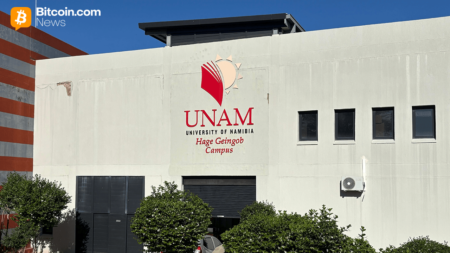Transforming USAID: How Blockchain Could Modernize U.S. International Development
The Trump administration has unveiled plans for a significant reform of the U.S. Agency for International Development (USAID), aiming to enhance its operational efficiency and transparency, especially in procurement processes. At the heart of this proposal is the integration of blockchain technology—a move that seeks to revolutionize how USAID conducts business and manages its funds in international development.
A Groundbreaking Proposal
The leaked document circulating within the State Department highlights a visionary blueprint for the future of USAID, focused on adopting modern technologies like blockchain. This proposal is not just about technology for technology’s sake; it aims to address longstanding issues within procurement processes that have often been criticized for inefficiency, lack of transparency, and vulnerability to fraud. By leveraging blockchain, officials hope to create a more accountable and streamlined system that can effectively manage and track the flow of funds.
The Role of Blockchain in Procurement
Blockchain technology, known for its decentralized and immutable ledger capabilities, could significantly transform USAID’s procurement strategies. Traditionally, international aid procurement has been convoluted, often involving multiple layers of bureaucracy that can cloud accountability. By implementing blockchain, each transaction could be recorded on a secure and transparent platform, making it easier to trace the flow of funds from the government to project implementers. This could not only enhance transparency but also instill greater confidence among stakeholders about how aid money is being used.
Benefits of Increased Transparency
Enhanced transparency is a prominent objective of the proposed overhaul. Insiders and critics alike have long called for a more open process in how aid is managed. With blockchain, USAID could provide real-time updates and audits of funding flows, allowing stakeholders—ranging from governments and NGOs to the public—to monitor expenditures. This heightened level of scrutiny could deter fraud, mismanagement, and corruption, ensuring that aid reaches the intended beneficiaries effectively and efficiently.
Stakeholder Engagement and Support
For this transformation to succeed, stakeholder engagement is crucial. The proposed blockchain initiative has the potential to resonate with various groups, including non-governmental organizations (NGOs), foreign governments, and even private sector partners. By collaboratively engaging these stakeholders in the implementation process, USAID can tailor the blockchain solution to meet diverse needs, thereby creating a more collaborative environment for international development.
Future Prospects of Blockchain in Aid Distribution
Looking forward, the integration of blockchain technology into USAID’s procurement processes represents not just a reformative step but a potential paradigm shift in how international development projects are executed. This initiative could serve as a model for other governmental agencies looking to modernize their operations. Furthermore, it aligns with broader trends in digital transformation across various sectors, emphasizing innovation as a tool for improving public accountability and service delivery.
Conclusion: A New Era for USAID
In conclusion, the Trump administration’s proposal to overhaul USAID through the inclusion of blockchain technology could redefine the landscape of international aid. While some challenges remain regarding implementation and stakeholder buy-in, the potential benefits—enhanced transparency, efficiency, and accountability—make this initiative a compelling step towards more effective global development practices. Adopting such cutting-edge technology could not only modernize USAID but also restore confidence in the U.S. as a leader in international aid and development efforts.
















